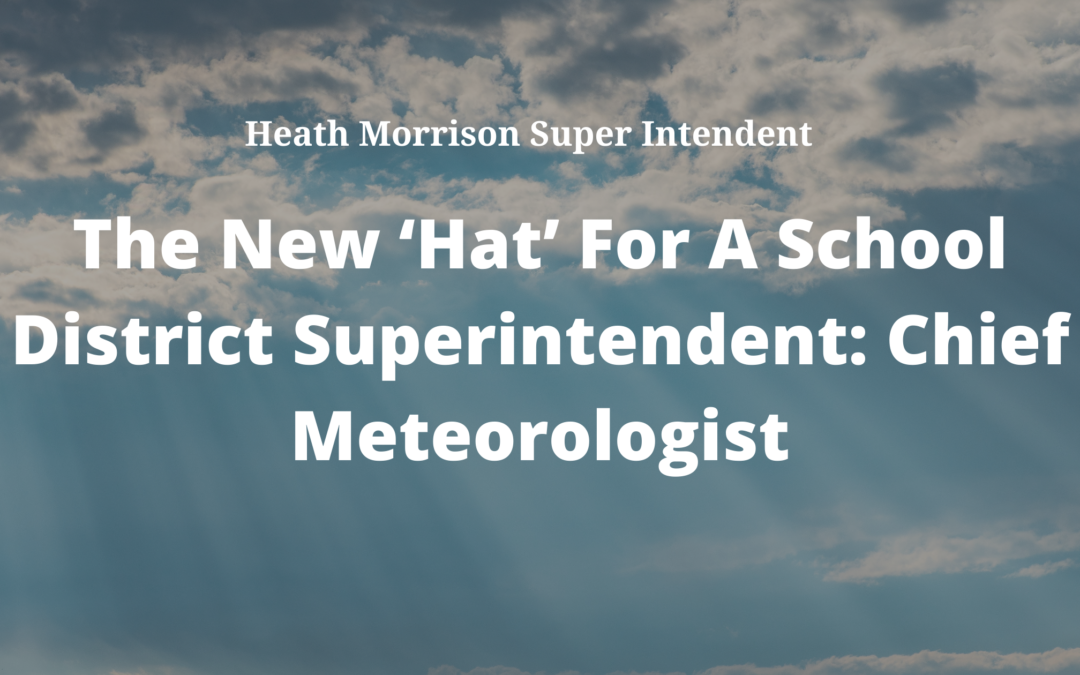A school district superintendent has several important roles in carrying out their responsibilities as the individual who oversees the academic and operational functions of the organization. As the sole direct report (in most cases) to the Board of Trustees, the superintendent is entrusted to oversee and ensure success in the many important functions of a school district, including academics, student support, finance, human resources, communications, and community relations, school safety and more. In addition to these important items, many school district superintendents, depending on their region of the country, are periodically tasked with an oftentimes impossible decision: predicting the weather.
Does the superintendent actually have to predict the weather? No. There are dedicated professionals who do this. What’s challenging for many superintendents is whether any impending inclement weather will have such an impact that closure to schools or a delayed start is necessary.
There are many steps that play into the process of making this decision:
- First and foremost, safety of students and staff is the driving factor in these decisions. The superintendent should always place safety at the forefront of school closure-related discussions.
- The district will communicate with families that there is a possibility school operations will be impacted by imminent inclement weather. The district should communicate this as soon as possible to provide families with ample time to plan for arrangements for their children should schools need to be closed.
- The superintendent will consult with local and regional weather and emergency management authorities as well as neighboring school districts to assess weather patterns and possible impact on roads and transportation.
- The superintendent will determine whether a school closure will require the district to add an additional day to the academic calendar. While this shouldn’t impact the final decision, it’s important to communicate if an additional day of school will be needed to make state requirements for student instructional time.
- The superintendent will consult with campus and district department leaders to gauge the academic and operational impacts of a decision to close, or remain open.
- Once a decision is reached, the district will communicate the plan to families and staff as well as the local media. It’s important to communicate this information via every tool available to the district.
Ideally, the superintendent wants to make a final decision well in advance of the school day. However, this is not always possible, and largely depends on the type of weather conditions that are forecasted to impact the area. For example, the predicted path of a hurricane may shift at any moment. And, in some cases involving freezing temperatures and ice, the decision cannot be made until roads are evaluated in the early morning hours. At best, the decision to close is reached and communicated 12-24 hours in advance. However, at worst, the decision is reached by 5 a.m. on the day of the closure. This is why it’s important for the school district to communicate the potential of a school closure as soon as it is believed to be a possibility.
It’s likely that no superintendent imagined being the “Chief Meteorologist” of the school district while training for the role. Yet, this difficult decision falls directly on the shoulders of the person occupying the superintendent seat. Ultimately, the safety of students and staff is the top priority. Erring on the side of caution should always be met with grace and understanding from the community.

